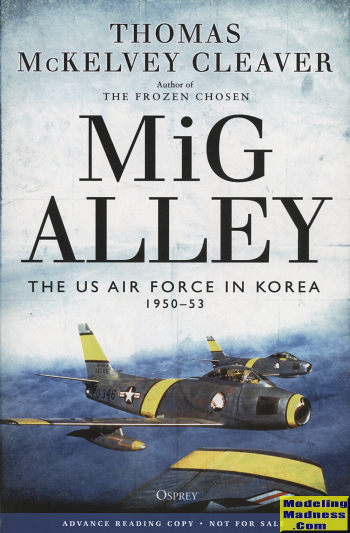 Those
of you who have been with Modeling Madness.com will be familiar with Tom
Cleaver's articles. Tom is foremost an author and a very good one. He has
produced a number of military history books that have all been critically
acclaimed.
Those
of you who have been with Modeling Madness.com will be familiar with Tom
Cleaver's articles. Tom is foremost an author and a very good one. He has
produced a number of military history books that have all been critically
acclaimed. |
Editor: |
Thomas McKelvey Cleaver |
|
Publisher/Distributor |
Osprey Publishing |
|
Price |
$30.00 MSRP |
|
Reviewer: |
|
| Notes: | 325 pages, hardbound, ISBN: 978-1-4728-3608-3 |
 Those
of you who have been with Modeling Madness.com will be familiar with Tom
Cleaver's articles. Tom is foremost an author and a very good one. He has
produced a number of military history books that have all been critically
acclaimed.
Those
of you who have been with Modeling Madness.com will be familiar with Tom
Cleaver's articles. Tom is foremost an author and a very good one. He has
produced a number of military history books that have all been critically
acclaimed.
This particular volume is subtitled 'The US Air Force in Korea 1950-53' and tells the story of USAF operations during the war. It is, in effect, a companion book to Tom's recent book on Naval operations 'Holding the Line'.
The US was not prepared for a war on the Korean peninsula and so had to enter the conflict with what was available in theater. This meant mostly WWII era aircaft with a few jets like the F-80 Shooting Star. Of course, their adversaries in North Korea were also operation WWII vintage equipment so things were fairly even. What was not even was the experience of the aircrew and in that regard, the USAF and allies were able to pretty well control the skies over the battlefield, something they fairly well managed to do throughout the war.
However, airpower was not able to stop the advance of North Korean army forces, though it was successful in slowing them down. Air resources during the early months of the war were mostly squeezed out of Korea and that meant a long flight from Japan. As the war turned after the Inchon landing, these resources were able to return to Korea.
It was the involvement of the Chinese on the ground and the Soviets in the air that turned things around. As the UN forces were closing in on occupying most of North Korea, the Chinese army intervened and turned the advance into a retreat. In the air, straight wing jets like the F-80 and F-84 were suddenly faced with superior Soviet jet fighters in the form of the MiG-15 flown by pilots who were in their own right aces during WWII.
This required the intervention of the US F-86 to combat them and then began a prolonged battle over a section of air called MiG Alley that was close to the Chinese bases from which the MiGs were based. This battle continued until the end of the war against mostly Soviet MiGs with Chinese units included later in the war. Both sides grossly over-claimed victories, a normal occurrence in war and in the end, the results were about even. Also in the end, it was proven that while air power did a lot to help ground forces, they were completely unable to stop the flow of supplies to communist ground forces, a lesson that had to be learned again during Vietnam.
As with all of Tom's books, the information is well researched and interesting. Several myths are busted and I always learn new things. For instance, from a modeler's standpoint, most of the F-86 models we build with Korean War markings were only acive in the last 6 months or so of the war as that is when the F-86F was introduced. It is a great book and if you have any interest at all in the subject, this is a book that must be on your shelf. Highly recommended.
May 2020
Copyright ModelingMadness.com. All rights reserved.
For more on the complete line of Osprey books, visit www.ospreypublishing.com
If you would like your product reviewed fairly and quickly, please contact the editor or see other details in the Note to Contributors.